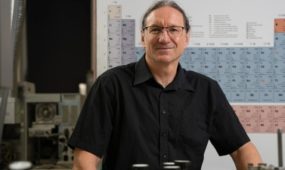The Pineapple genome and the genetic evolution of the drought tolerant fruit
Education

Sign up to receive notifications about new stories in this category.
Thank you for subscribing to story notifications.
RESEARCHERS have sequenced the genome of the Pineapple, unlocking what makes it one of the most economically important fruits.
Previous research has shown the pineapple has a specific photosynthesis pathway associated with plants that use water more efficiently, making them better able to cope during drought conditions.
Now, for the first time, scientists from the University of Illinois and the University of Adelaide, in South Australia, have been able to show a link between this pathway and the circadian clock.
University of Adelaide professors Vincent Bulone and Neil Shirley were asked to join the study in the last six months because of their work in cell wall metabolism, at the Australian Research Council Centre for Excellence in Plant Cell Walls.
“What this shows is the pineapple has evolved from the type of photosynthesis that occurs in 95 per cent of plants on the planet (known as C3).
“And the crassulacean acid metabolism, or CAM photosynthetic pathway, present in pineapples has evolved from pre-exiting genes in C3 plants, rather than through the acquisition of genes with new functions,” said Bulone.
Crassulacean acid metabolism is a photosynthetic pathway that maximizes water use many times more efficiently than C3 species.
Bulone said the discovery of the pineapple's genetic evolution to the CAM pathway and the capacity of pineapples to resist to arid conditions could play a long-term role in agricultural development.
“What is also important in this work, in terms of long-term in agricultural development, is the fact the pineapple has diverged from the lineage that has led to grasses and cereals, about 100 million years ago.
“Therefore the pineapple is a very good model to compare with the evolution of cereals and grasses,” he said.
The study was published this week in the journal, Nature Genetics.
Jump to next article



